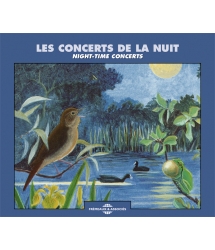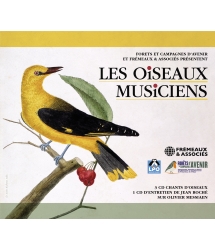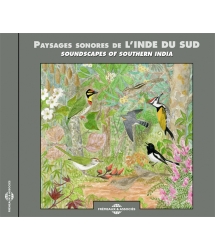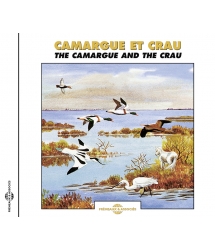- Our Catalog
- Philosophy
- Philosophers of the 20th century and today
- History of Philosophy (PUF)
- Counter-History and Brief Encyclopedia by Michel Onfray
- The philosophical work explained by Luc Ferry
- Ancient thought
- Thinkers of yesterday as seen by the philosophers of today
- Historical philosophical texts interpreted by great actors
- History
- Books (in French)
- Social science
- Historical words
- Audiobooks & Literature
- Our Catalog
- Jazz
- Blues
- Rock - Country - Cajun
- French song
- World music
- Africa
- France
- Québec / Canada
- Hawaï
- West Indies
- Caribbean
- Cuba & Afro-cubain
- Mexico
- South America
- Tango
- Brazil
- Tzigane / Gypsy
- Fado / Portugal
- Flamenco / Spain
- Yiddish / Israel
- China
- Tibet / Nepal
- Asia
- Indian Ocean / Madagascar
- Japan
- Indonesia
- Oceania
- India
- Bangladesh
- USSR / Communist songs
- World music / Miscellaneous
- Classical music
- Composers - Movie Soundtracks
- Sounds of nature
- Our Catalog
- Youth
- Philosophy
- News
- How to order ?
- Receive the catalog
- Manifesto
- Dictionnary











- Our Catalog
- Philosophy
- Philosophers of the 20th century and today
- History of Philosophy (PUF)
- Counter-History and Brief Encyclopedia by Michel Onfray
- The philosophical work explained by Luc Ferry
- Ancient thought
- Thinkers of yesterday as seen by the philosophers of today
- Historical philosophical texts interpreted by great actors
- History
- Books (in French)
- Social science
- Historical words
- Audiobooks & Literature
- Our Catalog
- Jazz
- Blues
- Rock - Country - Cajun
- French song
- World music
- Africa
- France
- Québec / Canada
- Hawaï
- West Indies
- Caribbean
- Cuba & Afro-cubain
- Mexico
- South America
- Tango
- Brazil
- Tzigane / Gypsy
- Fado / Portugal
- Flamenco / Spain
- Yiddish / Israel
- China
- Tibet / Nepal
- Asia
- Indian Ocean / Madagascar
- Japan
- Indonesia
- Oceania
- India
- Bangladesh
- USSR / Communist songs
- World music / Miscellaneous
- Classical music
- Composers - Movie Soundtracks
- Sounds of nature
- Our Catalog
- Youth
- Philosophy
- News
- How to order ?
- Receive the catalog
- Manifesto
- Dictionnary
Ref.: FA665
Artistic Direction : Olivier Gilg, Brigitte Sabard, Pierre Huguet et Jacques Loset (Groupe de recherche en écologie arctique)
Label : Frémeaux & Associés
Total duration of the pack : 55 minutes
Nbre. CD : 1
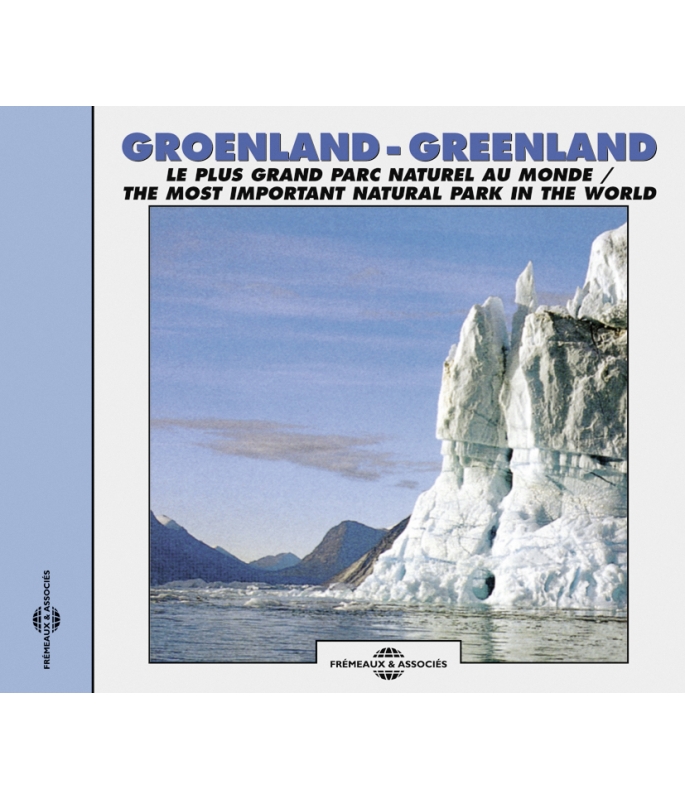
Frémeaux (Pithys) and Jean-Louis Etienne present “Greenland” the sound of the most important natural park in the word. A pure sound in the midst of infinite silence.
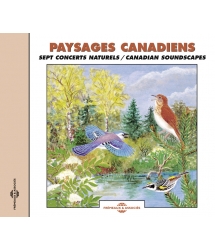
SEPT CONCERTS NATURELS
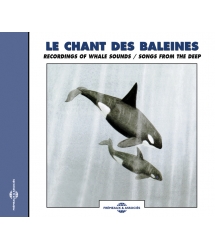
SONGS FROM THE DEEP - RECORDINGS OF WHALE SOUNDS
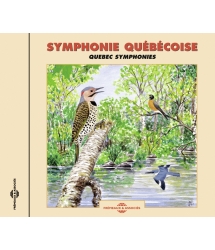
QUEBEC SYMPHONIES
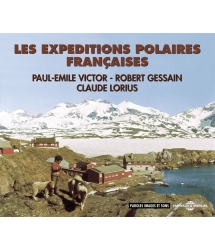
PAUL-EMILE VICTOR, ROBERT GESSAIN, CLAUDE LORIUS




-
PisteTitleMain artistAutorDurationRegistered in
-
1Concert naturelConcert of natural sound00:44:441996
-
2LoupWolf00:00:301996
-
3Grand CorbeauCommon Raven (Corvus corax)00:00:371996
-
4Bruant des NeigesSnow Bunting (Plectrophenax nivalis)00:00:301996
-
5Bernache NonnetteBernacle Goose (Branta leucopsis)00:00:441996
-
6Lagopède alpinRock Ptarmigan (Lagopus mutus)00:00:401996
-
7Bruant LaponLapland Longspur (Calcarius lapponicus)00:00:381996
-
8Plongeon ImbrinGreat Northern Diver (Gavia immer)00:00:421996
-
9Goéland bourgmestreGlaucous Gull (Larus hyperboreus)00:00:251996
-
10Sterne arctiqueArctic Tern (Sterna paradisaea)00:00:391996
-
11Plongeon catmarinRed-throated Loon (Gavia stellata)00:00:451996
-
12Harelde de MiquelonLong-tailed Duck (Clangula hyemalis)00:00:311996
-
13Bécasseau SanderlingSanderling (Calidris alba)00:00:321996
-
14Bécasseau MaubècheRed Knot (Calidris canutus)00:00:341996
-
15Craquements de GlaceIce00:00:311996
-
16Oie à bec courtPink-footed Goose (Anser brachyrhynchus)00:00:341996
-
17Grand GravelotRinged Plover (Charadrius hiaticula)00:00:291996
-
18Tournepierre à collierRuddy Turnstone (Arenaria interpres)00:00:301996
-
19Eider à duvetCommon Eider (Somateria mollissima)00:00:171996
-
20Pluvier doréGolden-Plover (Pluvialis apricaria)00:00:291996
-
21Mouette tridactyleBlack-legged Kittiwake (Rissa tridactyla)00:00:361996
Groenland
Groenland
le plus grand parc naturel au monde / the most important natural park in the world
L’aventure du Groupe de Recherches en Ecologie Arctique (G.R.E.A.) débute en 1975 : un groupe d’amis, passionnés par l’Arctique, organise une expédition au Spitzberg. Ils viennent y chercher une denrée devenue rare : une nature sauvage, préservée de toute influence humaine. Encouragés par la réussite de cette tentative, ils recommencent chaque année. En 1978, soucieux de faire partager leur passion, ils fondent le G.R.E.A., association à but non lucratif. C’est pourquoi le G.R.E.A., associé au Centre d’Etudes et de Documentation sur les Milieux Polaires (C.E.D.M.P.), a orienté ses travaux dans deux directions complémentaires :
• la recherche scientifique en Arctique ;
• la vulgarisation pour sensibiliser le plus grand nombre de personnes à la beauté de ces régions.
Le G.R.E.A. s’attache à faire connaître l’Arctique dans toute sa diversité. Les moyens mis en œuvres, conférences, films, livres, disques et publications dans des revues de vulgarisation scientifique grand public, permettent également au G.R.E.A. de financer ses actions. Le G.R.E.A. a à son actif une trentaine d’expéditions dans toutes les régions de l’Arctique. A ces missions participent des équipes pluridisciplinaires composées de spécialistes des sciences de la vie, de la terre et des sciences humaines, des artistes (photographie, cinéma, arts plastiques...) et des techniciens. Par la qualité de ses travaux, le G.R.E.A. a gagné une reconnaissance au point d’être considéré à ce jour comme un des organismes les plus compétents et les plus complets parmi ceux s’intéressant à l’Arctique.
GREA - Prérébois - F - 68660 Rombach Le Franc / CEDMP10, place de la Fontaine d’Ouche N° 77 F - 21000 Dijon
L’Arctique
Aux antipodes de l’Antarctique, l’Arctique se trouve à l’extrême Nord de notre planète et est constitué d’un océan glacé entouré de terres. En hiver, les températures peuvent descendre à –30, voire à –70°C par endroits. En revanche, de mai à septembre, le jour permanent les ramène à 0, à 5 et parfois à plus de 15°C au soleil. C’est durant ce court été polaire que viennent s’y reproduire une multitude de mammifères et d’oiseaux pour la plupart migrateurs. L’Arctique est partagé entre la Russie (Sibérie), les Etats-Unis (Alaska), le Canada (territoires du Nord-Ouest), le Groenland, l’Islande et la Norvège (Jan Mayen et Svalbard). On y trouve d’importants gisements de pétrole, de gaz et de minerais mais également des ressources biologiques qui rendent ces régions particulièrement convoitées par les pays occidentaux. L’Arctique, c’est aussi et surtout un ensemble de paysages superbes et magiques. Vierges pour la plupart, ils attirent de plus en plus de visiteurs. Gardons-nous de les dégrader, car ils sont aussi beaux que fragiles et de plus en plus menacés.
Le Groenland
Imaginez une île de la superficie de l’Europe, recouverte aux 3/4 d’une calotte glaciaire et où le blizzard souffle par –40°C... Imaginez des vallées de plusieurs centaines de kilomètres de longueur, encaissées de 2000 mètres, et encombrées d’icebergs gigantesques aux formes diverses... C’est dans ce pays de démesure, parmi les plus reculés du monde, que l’on rencontre encore une nature intacte où les animaux n’ont pas peur de l’homme. C’est dans le Nord-Est du Groenland que ces animaux, tous parfaitement adaptés aux rigueurs climatiques, sont le plus abondants. Dans cette partie de l’île, où le plus grand Parc Naturel du Monde (grand comme la France et la Grande Bretagne réunies) a été créé en 1974, seules quelques dizaines de personnes réparties dans 4 bases vivent en permanence. C’est là que nous avons pu enregistrer pour vous la plupart des ambiances sonores contenues dans ce disque, grâce à des centaines de kilomètres parcourus à pied, mais également grâce à une logistique d’expédition polaire faisant appel à des moyens de transport, de communication et de sécurité aussi exceptionnels qu’indispensables : avions tous-terrains, hélicoptères, skis, bateaux pneumatiques, G.P.S., balise satellite...
La Faune du Groenland
Lorsque le blizzard s’estompe, ce qui frappe avant tout le voyageur au Groenland, c’est le silence qui règne alors sur les immenses étendues de la toundra. Ce silence déconcertant différencie d’emblée ces zones polaires de toutes les autres régions émergées du globe. Mais pour le naturaliste attentif, ce silence est parfois interrompu par des cris furtifs ou par un chant mélodieux, trahissant ainsi la présence d’un oiseau ou d’un autre animal. De toutes les ambiances sonores du Groenland, le hurlement du Loup blanc est sans doute la plus émouvante. Après avoir disparu du Groenland durant plusieurs siècles, quelques Loups reviennent aujourd’hui coloniser le Nord-Est de l’île à partir de l’Arctique canadien. Le Grand Corbeau, beaucoup plus commun, fréquente la plupart des côtes du pays, à la recherche de baies, d’œufs ou d’animaux affaiblis par le froid. Mais au printemps, lorsque la toundra est encore recouverte de neige, c’est le Bruant des neiges qui est le premier oiseau migrateur à regagner ses quartiers d’été. Il entonne, dès le mois d’avril, ses douces phrases mélodieuses qu’il ne cessera plus d’émettre jusqu’à la fin de l’été. La Bernache nonnette, après avoir passé l’hiver en Ecosse, revient elle aussi chaque année pour nicher dans les nombreuses falaises du Nord-Est du Groenland. Dès leur éclosion, répondant à l’appel de leurs parents, les petits doivent se jeter dans le vide. Après une chute de plusieurs dizaines de mètres, ils peuvent ensuite rejoindre les zones de nourrissage situées non loin de là. Le Lagopède alpin quant à lui, est l’un des rares oiseaux sédentaires du Groenland. Parfaitement adapté au froid, il troque en été son plumage blanc pour une livrée mouchetée plus mimétique. Comme le Bruant lapon, il parcourt inlassablement la toundra à la recherche de graines et d’insectes. A l’intérieur des terres sur les petits lacs poissonneux, il est parfois possible d’entendre les vocalises du Plongeon imbrin. Extrêmement riche de diversité, son chant résonne alors sur plusieurs kilomètres à la ronde. En revanche, le Goéland bourgmestre est généralement repéré à proximité des colonies de Sternes arctiques qui le houspillent inlassablement. Les Sternes ne viennent que quelques semaines au Groenland. Dès le mois d’août, elles repartiront pour aller hiverner sur les rivages de l’Antarctique, à l’autre extrémité de la planète! Aux abords de ces colonies bruyantes, il n’est pas rare de surprendre les parades amoureuses et bruyantes du Plongeon catmarin et de la Harelde de Miquelon. Nichant dans la toundra, tous deux viennent se nourrir dans les fjords en soirée. Le Bécasseau sanderling, comme le Bécasseau maubèche, recherche les zones les plus sèches de la toundra pour y construire son nid. Comme ceux de l’Oie à bec court, les poussins des bécasseaux sont “nidifuges”, c’est-à-dire qu’ils quittent leur nid quelques heures seulement après être nés et devront rapidement apprendre à se nourrir seuls. Le Grand Gravelot et le Tournepierre à collier sont deux autres limicoles. Contrairement aux bécasseaux, ils recherchent pour nicher des zones graveleuses, anciennes terrasses marines ou lits de rivières, d’où ils défendent bruyamment leurs territoires. L’Eider à duvet, un canard marin, a l’habitude de nicher en petites colonies sur les îlots côtiers de l’Arctique. Comme le Pluvier doré et la Mouette tridactyle, on le rencontre également dans d’autres régions de l’Arctique et parfois même en Europe. Mais au Groenland, la survie de ces espèces est très précaire car après un été aussi bref que riche, c’est un hiver glacial qui reprendra bientôt possession des lieux.
GREA
© 1995 Pithys - 2008 FRÉMEAUX & ASSOCIÉS
Guide d’identification des espèces typiques du Groenland / Guide to typical Greenland species
Les espèces sont classées par ordre d’apparition dans le concert naturel...
1. Concert naturel : dans les étendues vierges et glacées du Groenland, seul le vent, la glace et les animaux rompent par leurs sons mélodieux, le silence millénaire de la vaste toundra. C’est là, non loin du pôle nord, que viennent se reproduire chaque année le temps du court été polaire une pléiade d’oiseaux et de mammifères arctiques. Ce concert naturel, enregistré lors d’expéditions du GREA, reproduit pour vous cette ambiance unique et inoubliable.
1. Concert of natural sounds.
In the primeval, icy wastes of Greenland, only the sounds of the wind, ice and animals
disturb the age-old silence of the Tundra. It is here, not far from the North Pole, that multitudes of birds and animals congregate each year to breed, during the short polar summer. This concert of natural sounds, recorded in the course of several GREA expeditions, conjures up the unique and unforgettable atmosphere of this part of the world.
Guide d’identification des espèces typiques du Groenland / Guide to typical Greenland species
Species are classified by order of appearance in the concert of natural sounds
2. Loup / 2. Canis lupus / 2. Wolf
3. Grand Corbeau / 3. Corvus corax / 3. Raven
4. Bruant des neiges / 4. Plectrophenax nivalix / 4. Snow Bunting
5. Bernache nonnette / 5. Branta leucopsis / 5. Barnacle Goose
6. Lagopède alpin / 6. Logopus mutus / 6. Rock Ptarmigan
7. Bruant lapon / 7. Calcarius lapponicus / 7. Lapland Bunting
8. Plongeon imbrin / 8. Gavia immer / 8. Great Northern Diver
9. Goeland bourgmestre / 9. Larus hyperboreus / 9. Glaucous Gull
10. Sterne arctique / 10. Sterna paradisaea / 10. Arctic Tern
11. Plongeon catmarin / 11. Gavia stellata / 11. Red-throatet Diver
12. Harelde de Miquelon / 12. Clangula hyemalis / 12. Long-tailed Duck
13. Bécasseau sanderling / 13. Calidris alba / 13. Sanderling
14. Bécasseau maubèche / 14. Calidris canutus / 14. Knot
15. Craquement de glace / 15. Ice
16. Oie à bec court / 16. Anser brachyrhynchus / 16. Pink-footed Goose
17. Grand Gravelot / 17. Charadrius hiaticula / 17. Ringed Plover
18. Tournepierre à collier / 18. Arenaria interpres / 18. Tumstone
19. Eider à duvet (Norvège) / 19. Somateria mollissima / 19. Common Eider (Norway)
20. Pluvier doré / 20. Pluvialis apricaria / 20. Golden Plover
21. Mouette tridactyle / 21. Rissa tridactyla / 21. Kittiwake
english notes
The story of GREA (Arctic Ecology Research Group) began in 1975. A group of friends, all keen Arctic enthusiasts, organised a trip to Spitsbergen. They were looking for natural wilderness, unaffected by human influence, which even then was becoming increasingly rare. Encouraged by the success of their undertaking, they have organised trips every year since then. In 1978, they founded GREA, a non-profit making organisation, in order to share their passion with others. Their aim is to contribute to conservation of the polar regions which are some of the most remarkable and fragile natural habitats in the world. GREA consequently joined forces with CEDMP (Centre d’Etudes et de Documentation sur les Milieux Polaires - Centre for the Study and Documentation of Polar Habitats) to focus on two additional concerns:
• scientific research in the Arctic;
• popularisation to increase public awareness of the beauty of this part of the world.
GREA is committed to promoting knowledge of the Arctic in all its diversity. The associated resources - lectures, films, books, records and publications in non-specialist scientific journals - also help to fund GREA’s work. GREA can draw on experience spanning about thirty expeditions to all parts of the Arctic. The multidiscipline teams taking part in these expeditions comprise scientists specialising in biology, geology and the humanities, as well as artists (photographers, film makers, sculptors, etc.) and technicians. Thanks to the quality of its work, GREA has won considerable recognition and is considered to be one of the most competent and wide-ranging bodies in the field of Arctic studies.
GREA Prérébois - F - 68660 Rombach Le Franc / CEDMP - 10, place de la Fontaine d’Ouche N° 77 - F - 21000 Dijon
The Arctic
The Arctic is located at the northern extremity of the globe. It comprises an ocean of ice surrounded by several land masses. In winter, temperatures may fall to –30°C and as far as –70°C in some places. In contrast, from May to September, they may climb to 0°, 5° or even 15°C in the sun. It is during the brief polar summer that numerous mammals and birds, mainly migratory species, come to breed. The Arctic covers parts of Russia (Siberia), the United States (Alaska), Canada (Northwest Territories), Greenland, Iceland and Norway (Jan Mayen and Svalbard). There are large stocks of oil, gas and minerals but also biological resources that make this part of the world particularly attractive to developed countries. However, the Arctic is above all an area of outstanding, magical beauty. It is almost completely undeveloped and now attracts more and more visitors. We must take care not to damage its landscapes, which are as fragile as they are beautiful and increasingly threatened.
Greenland
Imagine an island the size of Europe, three-quarters of which is covered by an ice-cap over which blizzards howl at temperatures of about –40°C. Imagine valleys several hundred kilometres long, enclosed by cliffs two thousand metres high and cluttered with gigantic icebergs. In this unreal land, which is one of the most inaccessible in the world, it is still possible to find untouched wilderness where animals are not afraid of man. The animals are perfectly adapted to the difficult climate and are found in the greatest numbers in the north-east of Greenland. The largest natural park in the world was founded here in 1974. It covers an area equivalent to the whole of the British Isles and France, but only about twenty to thirty scientists, spread over four bases, live here all the year round. Most of the sound landscapes were recorded in this part of Greenland, after trekking hundreds of kilometres on foot. We were also helped by logistics resources worthy of a polar expedition, including exceptional but very essential transport and communication facilities such as special planes, helicopters, skis, inflatable dinghies, GPS and satellite beacons.
Fauna in Greenland
When the blizzard relents, the first thing that strikes visitors to Greenland is the silence that reigns in the wastes of the Tundra. The disconcerting silence makes the polar regions quite different from any other part of the globe (above sea level). However, attentive naturalists will occasionally detect furtive cries or melodious bird song, revealing the presence of a bird or animal. Of all the sounds typical of Greenland, the howling of the Arctic Wolf is the most moving. After disappearing from Greenland for several centuries, a few pairs of wolves have now returned to colonise the north-east corner of the island adjoining Canada. Ravens, which are much more common, abound along the coastline, where they feed on berries, eggs and animals weakened by the cold. In the spring, the Tundra is still covered by snow. The Snow Bunting is the first migratory bird to take up summer residence. From April to the end of the summer, you may hear its gentle, melodious song. The Barnacle Goose spends the winter in Scotland and returns every year to nest amongst the innumerable cliffs in north-east Greenland. Once they have hatched the chicks must leap into the abyss, in response to the call of their parents. After dropping thirty of forty metres, they join their parents on the nearby feeding grounds. In contrast, the Rock Ptarmigan is one of the few sedentary birds found in Greenland. It is perfectly adapted to the cold, trading its white winter plumage for a spotted livery in summer, more in keeping with its surroundings. Both the Rock Ptarmigan and the Lapland Bunting are constantly busy, scouring the Tundra for seeds and insects. Further inland, on the little lakes which are full of fish, you may hear the Great Northern Diver. Its song is extremely diverse and carries several kilometres. The Glaucous Gull is more likely to be found close to the colonies of Arctic Terns, which direct a steady stream of abuse at the gulls. The Terns themselves only spend a few weeks in Greenland. In August, they depart to spend the winter on the shores of Antarctica, at the other end of the globe! In the area surrounding these colonies it is not unusual to witness the noisy, mating display of the Red-throated Diver and Long-tailed Duck. Although they nest on the Tundra, both species come down to the fjords to feed in the evening. The Sanderling and the Knot both favour the drier parts of the Tundra for building their nests. Like the offspring of the Pink-footed Goose, their chicks leave their nests only a few hours after hatching and need to learn to fend for themselves very rapidly. The Ringed Plover and Turnstone are both waders. Unlike the Sanderling and the Knot, they prefer to nest in gravelly areas – terraces formed by the sea of riverbeds – noisily defending their territories. The Common Eider, a maritime duck, nests in small colonies on the little islands along the Arctic coasts. Much as the Golden Plover and the Kittiwake, it is also found in other parts of the Arctic and sometimes even in Europe. However, in Greenland the survival of these species is very precarious, for after a rich but brief summer, icy winter soon takes a hold on the landscape.
GREA
© 1995 Pithys - 2008 FRÉMEAUX & ASSOCIÉS
CD Groenland / Greenland © Frémeaux & Associés / Droits audio : Frémeaux & Associés - La Librairie Sonore (Producteur initial : Sittelle, Pithys, Collection Allain Bougrain Dubourg ou Ceba) / Ecouter les chants d'oiseaux sur CD : Sons et ambiances naturelles des écosystèmes - Stéreo and digital recording of the natural landscape sound. Natural sound sceneries of écosystems, Voices of the Wild Life. Les droits de cet enregistrement sont protégés par la loi. Pour toute exploitation d’illustration sonore sur CD, DVD, CD-Rom, Télévision, Cinéma, Sites internet, scénographies (théâtre, musées…), l’autorisation et un devis gratuit peuvent être obtenus auprès de Frémeaux & Associés – fax : +33 (0)1 43.65.24.22 info@fremeaux.com
